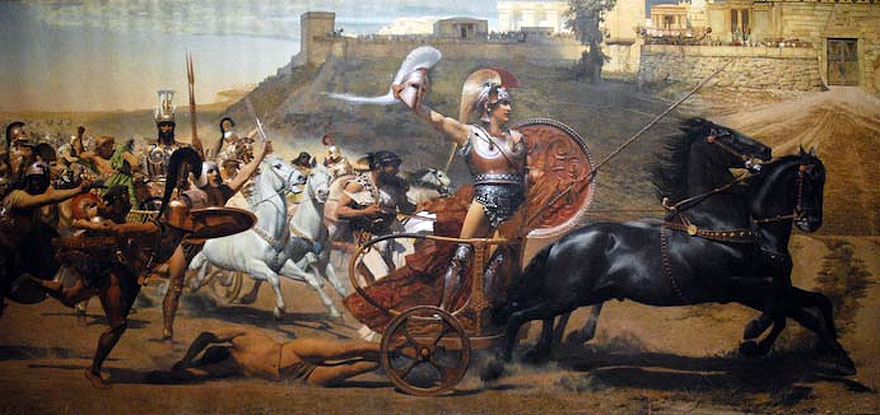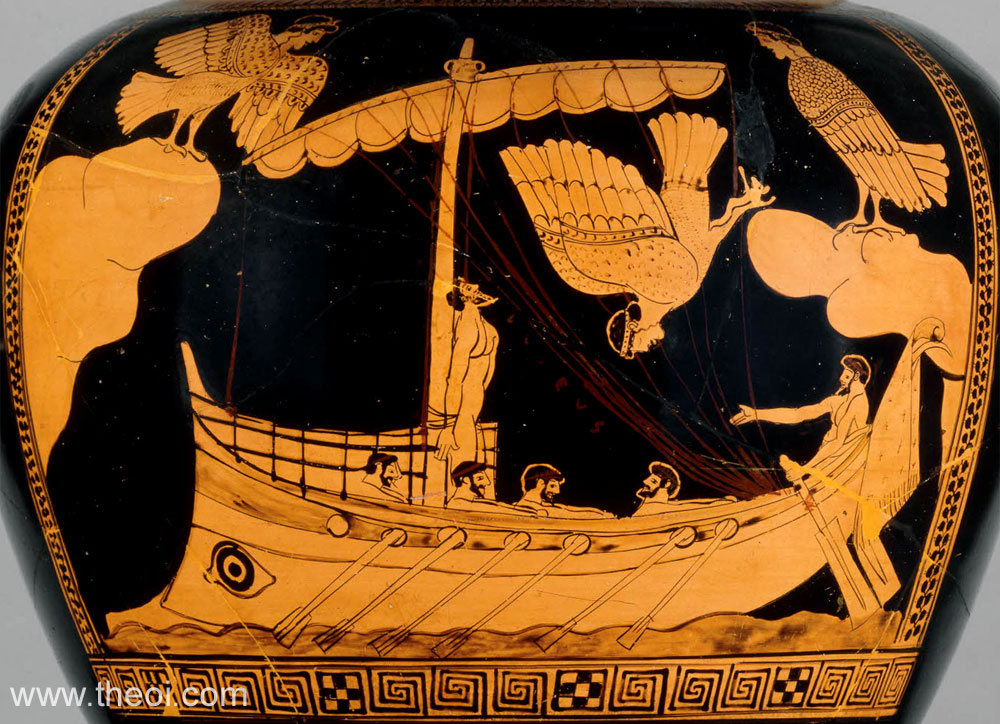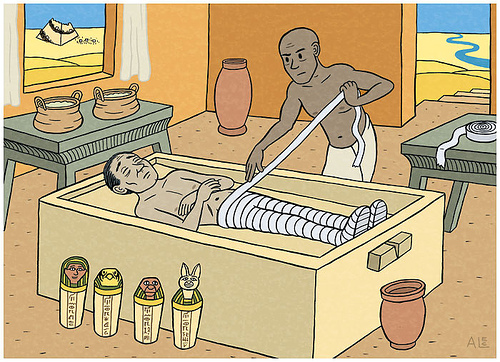The Myth of Aeneas is both a hero myth and a early times myth. A hero myth is is a story of a hero on their journey. The Myth of Aeneas is the story of Aeneas on his heroic journey. It is an early times tells about something that happened a long time ago. The myth of Aeneas tells about how Rome was founded.
 |
| This is a modern image of what archeologists think Troy, the hometown of Aeneas, looked like. |
One day, the Greeks came and attacked Troy. This started a war between the Trojans and the Greeks. Aeneas did not help the war effort until Neptune persuaded him to do so after Achilles stole some of his cattle. When he did enlist, he served under the command of the Trojan prince, who at the time was named Hector, the cousin of Aeneas. At one point, Apollo encouraged him to challenge the god Achilles to a fight. But Aeneas was later removed by Neptune. Neptune wanted him to become the future ruler of Troy.
 |
| This is a painting of Prince Hector's body being dragged around the city by chariot. |
On the day Troy was sacked, the king Prium was killed. The Greek soldiers ran through the city. Aeneas, Anchises and the remaining Trojans who survived the war, all embarked on an odyssey to make landfall at different places in the Mediterranean Sea in hopes of establishing new civilization. Aeneas carried Aphrodite and his son Ascanius with him. He went back to the flaming city to get his wife Creusa, but she had already died in the fire. That night, they stayed on Mt. Ida near Troy. There they prepared for their sea voyage by building their ships. Their first stop was Thrace.
 |
| This is a drawing of Teucer. |
At Thracem Aeneas was met by the ghost of Priam’s son, Polydorus, who informed him to leave this city. They continued to Delos to speak with the oracle of Apollo, who informed him to leave and find the “ancient mother” of his people. Anchises said that the oracle was talking about Crete, the homeland of Teucer, an ancestor of Troy’s founder.
 |
| This is a painting on a clay pot of harpies attacking the boat of Aeneas. |
 |
| This is a painting of Aeneas talking to Queen Dido. |
Aeneas and his crew arrived a Sicily once more and had a funeral in honor of Anchises. After colonizing Sicily Aeneas moved on to Italy. Once in Italy, the king of the area they landed in, Latinus, received them with great welcome. But everyone else, notably Turnus, the ruler of Rutuli and Latinus’s wife, did not welcome Aeneas and his crew. They especially protected the marriage rights of Aeneas and Lavinia, Latinus’s daughter. War broke out and the Trojans were victorious, destroying Turnus. Aeneas and Lavinia married and founded Lavinium.
| This is 1500s map containing Latium. |
| This is a image showing the land controlled by the Roman Empire. |
 |
| This is an artistic representation of what President Barack Obama would look like as a super hero. |
Works Cited
"Can You Compare Aeneas to a Modern Day Hero?" Yahoo! Answers. Yahoo!, n.d. Web. 18
Nov.2014.<https://answers.yahoo.com/question/index?qid=20131027034130AARZHa0>
"KET - Greek/Roman Mythology." KET - Greek/Roman Mythology. N.p., n.d. Web. 17 Nov.
2014. <http://www.dl.ket.org/cgi-pub/foxweb.exe/Gods@/db/pub/pub?by=romanname>.
"Myths Encyclopedia." Aeneas. N.p., n.d. Web. 17 Nov. 2014.
<http://www.mythencyclopedia.com/A-Am/Aeneas.html>.
"Mythical Story the Founding of Rome." The Founding of Ancient Rome. N.p., n.d. Web. 17
Nov. 2014. <http://historylink101.com/2/Rome/roman-founding.htm>.
Mythology: The Illustrated Anthology of World Myth and Storytelling. London: Duncan Braid,
2002. 238-40. Print.
The Editors of Encyclopædia Britannica. "Aeneas." Encyclopedia Britannica Online.
Encyclopedia Britannica, n.d. Web. 18 Nov. 2014.
<http://www.britannica.com/EBchecked/topic/7113/Aeneas>.
Computer Modeled Reconstruction of Troy 6. N.d. History Wiz. The Discovery of Troy. Web.
The Body of Hector. N.d. Luminarium. Achilleshector.jpg. Web.
<http://www.luminarium.org/renlit/achilleshector.jpg>.
Harpies. N.d. Theoi.com. O21.3Seirenes.jpg. Web.
<http://www.theoi.com/image/O21.3Seirenes.jpg>.
Queen Dido. N.d. Wikipedia Commons. Web.
<http://upload.wikimedia.org/wikipedia/commons/thumb/e/e0/Gu%C3%A9rin_%C3%89
n%C3%A9e_racontant_%C3%A0_Didon_les_malheurs_de_la_ville_de_Troie_Louvre_5
184.jpg/350px-Gu%C3%A9rin_%C3%89n%C3%A9e_racontant_%C3%A0_Didon_les_
malheurs_de_la_ville_de_Troie_Louvre_5184.jpg>.
Latium Map. N.d. Wikipedia Commons. Web.
<http://upload.wikimedia.org/wikipedia/commons/c/c0/Abraham_Oertel_-_Latium_-_15
95.PNG>.
Roman Empire. N.d. Wikipedia Commons. Web.
<http://upload.wikimedia.org/wikipedia/commons/1/18/Amphi-Rome.PNG>.
Roman Empire. N.d. Barack Obama Superman. Wikia. Web.
<http://img1.wikia.nocookie.net/__cb20090620063410/wikiality/images/thumb/3/3f/Bara
ck-obama-superman-byron-furgol.jpg/300px-Barack-obama-superman-byron-furgol.jpg>







.jpg)




